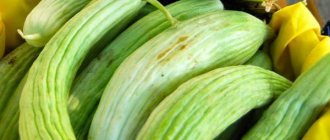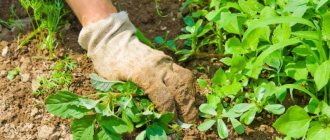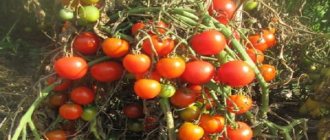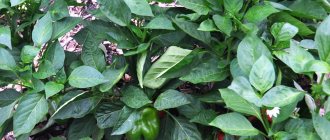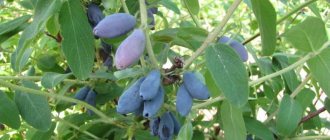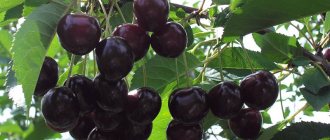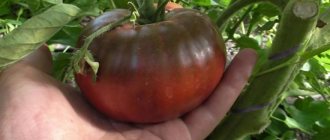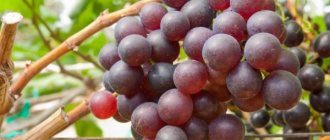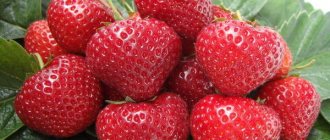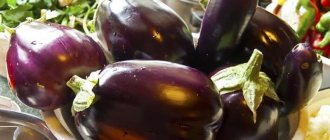Red Baron onion, description of the variety, planting and care, photos, reviews, advantages and disadvantages of which are described in this article, is distinguished by its exquisite taste and special benefits. The red onion variety contains 2 times more antioxidants than regular varieties. Red (purple) onions help get rid of bad cholesterol.
Depending on the growing region and the nutritional value of the soil, the amount of vitamins and minerals in onions will vary. The most useful are the top juicy scales. The Red Baron onion variety is considered one of the best among red varieties. Next, you can study its characteristics, advantages and disadvantages, as well as cultivation features.
Description and characteristics of the variety
Let's start with a description of Red Baron. The features of this species include the beautiful rich red color of the bulbs . They are distinguished by a round, slightly flattened shape with a fairly dense structure of the top layer (husk). It has fleshy, juicy flesh with purple-red veins on a white-pink background.
The variety is characterized by mid-early ripening. The bulbs can be collected within three months after planting. The fruits reach from 24 to 120 grams. They have a pleasant aroma and a sweetish taste (less pungent than regular varieties).
Red Baron onion close-up cross-section
By adding it to other ingredients, you don’t have to worry about the dish turning red.
Thanks to these qualities, “Red Baron” is widely used in cooking and preparing vegetable dishes.
Reviews
Let's find out what those who grow them in their gardens say about Red Baron onions.
- Boris, 55 years old, Moscow: “I have grown all sorts of plants on my plot: including onions of different varieties. But I especially liked the red variety Red Baron. It is very tasty, the harvest is good, and it is not too fussy to care for. Now all salads are made only with this onion, and my wife uses it for canning. I recommend".
- Ekaterina, 38 years old, Voronezh: “We live in a private house, so the issue of growing garden crops is very relevant for us. Everyone at home loves onions, so we try different varieties to find the ones that suit our taste. I was very pleased with the Red Baron variety. It's not very widespread yet, but I'm sure it's temporary. It has unsurpassed taste, it stores well all winter, and its care is almost the same as for ordinary yellow onions. I can confidently recommend it."
So, we looked at the features of growing Red Baron onions in open ground. This tasty and healthy vegetable is unpretentious, so it won’t cause much trouble or worry. But many valuable qualities can make Red Baron a real favorite among vegetable garden crops.
Advantages of Red Baron
Red onion is considered an active fighter against various infections, cholesterol, and diabetes. Thanks to the increased content of antioxidants, it helps the body fight cancer and slows down the aging process of cells. The most useful are the upper, juiciest parts of the onion.
The vegetable contains a large number of various minerals and vitamins. For example, the amount of vitamin C can reach 6.2 mg.
The composition and percentage of vitamins and minerals largely depends on the quality of the soil and the place of cultivation.
In addition to rapid maturation and a wide range of useful qualities, the advantages include:
- High stable yields (up to 3 kg per 1 m²) under any climatic conditions.
- Beautiful presentation and pleasant taste.
- Long-term storage.
- Resistant to drought and disease. This is achieved due to the well-developed, strong root system of this variety.
Red Baron onion growing in a tray
Red Baron onion can also be grown in the northern regions, as it tolerates early frosts well.
Advantages and disadvantages
Red Baron onions have many positive qualities. The culture has practically no negative aspects. The main advantages of the variety are:
- early ripening - you can get a harvest even in an area with a cold climate and it will have excellent taste, which is almost impossible for dessert varieties of onions in the Northern regions;
- high content of dry matter, ascorbic acid and antioxidants, vitamin C;
- rich color that is not lost during storage and does not transfer to other components of the dish;
- significant weight of the bulbs and attractive presentation, which is of great importance for those who grow vegetable crops not only for personal use, but also for sale;
- early ripening and excellent ripening - the maximum ripening time of the crop is 105 days, and the minimum is 90 days, which allows you to harvest onions of this variety in different climates;
- long-term storage - when maintaining the right conditions, the vegetable does not lose its properties and taste until June.
However, the variety also has some weaknesses. Thus, its disadvantages include growing onions mainly by seeds, rather than by planting sets (Red Baron onion sets of good quality are quite difficult to buy), which somewhat complicates agricultural technology. Seeds are difficult to obtain in your garden, so you have to buy them annually. Approaching the evaluation of a variety objectively, we can conclude that the existing disadvantages are so insignificant that they cannot be taken into account.
Time to board
The optimal time for planting is stable weather, absence of night frosts. This usually happens in late April or early, mid-May (southern and middle regions). In the northern zone, planting takes place later, in the first days of June.
It needs to be planted on fine days. You cannot delay the landing time. Onions may not have time to ripen before temperatures drop and rains. This will cause the bulbs to rot.
You can grow onions using seedlings. This is a cheaper method, but involves a lot of hassle in the process of preparing for landing. Onions grown from seedlings do not produce shoots and allow you to get turnips in the same year. They are poorly preserved until spring, but are suitable for planting in the fall - before winter.
Planting should be done at a temperature:
- Air: during the day 0 +5 °C, at night – about -3 °C.
- Soil: the soil should not be too warm up to +4 °C
This is usually done in October, early November. The main thing is that the seedlings take root before frost appears and do not have time to shoot green arrows.
Advantages of planting in winter:
Ripe red baron onion
- Earlier ripening.
- The bulb is less susceptible to various kinds of diseases.
- There is no need to waste time in the spring on planting and caring for seedlings.
Negative factors include:
- Spring stagnation of water in the beds.
- Planting too deep and too early.
- Frequent temperature changes. The bulb freezes and thaws several times.
Preparing the site for landing
In order for the harvest to be good, it is necessary to take care in advance about the area where the planting will take place. To do this you need:
- Choose a sufficiently illuminated and dry part of the site. Places where potatoes, cucumbers, tomatoes or beans used to grow are good options.
- The beds are made higher for low-lying areas.
- The earth is dug up and fertilized. You need to add two buckets of peat, half a bucket of humus, a glass of wood ash, a tablespoon of superphosphate. In the fall you can have two. All this is based on 1 m².
In the spring, after the ground has thawed, the beds are fertilized with ammonium nitrate. A teaspoon per square meter.
Red Baron onion in the garden plot
Seed preparation
Seeds that are no more than two years old are suitable for germination. Older specimens have questionable germination capacity - it is better not to waste time on them. To increase the germination of seeds and protect the plant from damage by harmful insects and diseases, it is necessary to treat the seeds: for this, the seed is placed in a solution of potassium permanganate for an hour.
After this procedure, dry the seeds and proceed to the next stage of preparation. Namely, to soaking the seeds in the Epin solution. The proportion is as follows: 2 drops of the drug per 1 glass of water. The seeds are placed in this solution, where they are kept for 18 hours in a warm place. After this procedure, the seeds are removed from the dressing solution, dried, and become ready for planting. But how to plant nigella onions in a snail is described in detail in this article.
Landing Features
You can plant Red Baron in different ways:
- Onion sets. To speed up germination, the bulbs are soaked in water (35 – 38 °C) for up to 15 hours. The seedlings are pressed into moist, loose, weed-free soil. The depth should be about 4 cm. The distance between the bulbs is up to 10 cm, and the beds are approximately 20 cm. The comfortable temperature for planting is 10 – 15 °C. The top of the bulb is trimmed (3-4 days before sowing). This will allow for faster and juicier shoots of green onion feathers. This method of sowing does not require a large amount of additional fertilizer. Pre-prepared soil is sufficient.
- Seeds. After preparing the soil and beds, small grooves are made. The distance between them is 15 cm, the depth is 1.5 cm. After spilling the sowing area with warm water, the seeds are sown (1 - 1.5 cm between them). Having finished sowing, the seeds are dusted with peat or soil (1 cm). Upon completion, the beds are covered with film. The film must be removed after the first shoots appear. To prevent them from burning in the sun, you can further protect them (until June) using non-woven materials, lutrasil or spunbond.
- Seedlings. Saplings are prepared at home from seeds. They are sown in special boxes or cassettes (late April, March). Before planting in the ground, the seedlings are separated from each other. Each plant goes deeper by 1 cm. The distance is 5 cm from each other. After watering, each planting site is mulched with peat.
Seeds for open ground and seedlings are prepared in the same way:
- Soak in a manganese solution (1 g per liter of water) for 45 - 60 minutes.
- Fill with a solution of the drug “Epin” (according to the instructions) for 18 hours.
- Dry to a powdery state.
Growing
To grow full-fledged bulbs, it is necessary to use sets (small bulbs previously grown from nigella in last year’s season) as planting material. This type of growing red onions is relevant for most regions of our country. A full-fledged crop can be grown from nigella only in the southern territories.
You can learn about growing onions in a greenhouse in winter here.
Planting process
It is necessary to carry out proper preparation of the seedlings, which consists of the following:
- trimming the apical part of the onion's outer layer for the rapid appearance of the feather;
- soak the sets in warm water overnight;
- can be processed for an hour in a solution of potassium permanganate;
- Dry the prepared onions well.
Read about processing onions before planting in this article.
Don't miss the correct timing for planting seedlings. This is around the end of April, when the air warms up to 15 degrees.
If the temperature is higher, the juiciness of the grown crop will decrease and the taste will deteriorate. When planted in cold weather, the bulbs will form poorly and will be small, but they will grow into excellent plumes.
The predecessors of onions are tomatoes, potatoes, and legumes.
During planting, the distance between the rows is maintained at approximately 20 cm. The planting material is deepened to four centimeters, about 10 cm is left between the bulbs. The bed is sprinkled with peat, soil and spilled with water.
This link will tell you about growing onions as a business.
After planting, it is necessary to organize proper care to form a good harvest. The plant is unpretentious, care will not create much difficulty. Follow these rules:
- timely loosening;
- regular watering;
- weeding;
- thinning;
- disease prevention;
- pest control;
- feeding
Watering is done up to two times a week before July, using a watering can with small holes. Afterwards, loosening and weeding are carried out. It is necessary to sprinkle the soil with a protective mixture as a preventive measure against onion flies.
In the same way as a complex of fertilizing is carried out on nigella, fertilizers are applied in the form of solutions.
- The first feeding is a solution of mullein or bird droppings 1 to 15 with the addition of one and a half tablespoons of superphosphate. Fertilize the bed moistened with water.
- Next, the following fertilizers are applied in the form of an aqueous solution: one and a half tablespoons of potassium sulfate and a tablespoon of superphosphate are diluted in ten liters of water. The mixture is applied to moist soil every 3 weeks.
- From the second ten days of July, watering stops, but the earth is also weeded and loosened.
Care after landing
It is necessary to water the seedlings regularly, during the first month (every 5-7 days – once). If there is extreme heat - twice every week. After heavy rains and watering, the soil must be loosened and weeds removed.
During the formation of the bulbs, the plant is fed with fertilizers (phosphates, potassium sulfate). Organic types of bait are added (mullein, chicken droppings). It is better to dilute in water according to the instructions and use during watering once a month.
Red Baron onion care
Around mid-summer, watering and fertilizing stops. This is due to the ripening of turnips. Excess moisture and fertilizers can ruin them.
After the first feathers appear, the plants must be thinned out. The weakest shoots are removed. The distance between each of the remaining ones is gradually increased to 6–10 cm. Such measures contribute to a good harvest and large-sized bulbs.
You cannot leave uprooted plants in the beds. This will lead to the appearance of onion flies.
Prevention from diseases and pests
Protection against onion flies is:
- Timely weeding of beds.
- Timely disinfection of the soil (sprinkling with ash, a mixture of sand and naphthalene - 20 to 1).
- Treatment of the plant with an insecticide (Medvetox, Muhoed, Aktara, etc.).
The appearance of a fluffy grayish coating on the leaves signals that the plant is affected by peronosporosis (downy mildew). This threatens to soften the bulbs and die off the leaves. For prevention it is necessary:
- Treat the beds with 1% Bork (before planting).
- Spray the plants with Rodomil Gold MC (when 4–6 feathers appear).
Do not overuse watering. Excess moisture will damage the root system. As a result, the turnip itself will rot.
Harvest and storage
Red Baron cleaning occurs after the feathers fall (end of summer). Onions should be removed from the beds and dried on the ground. Then, after cutting off the roots, it is dried in the air or in a ventilated room. Tails can be tied into buns, braids or cut off. Do not leave the crop in direct, scorching sunlight.
Red Baron Harvest
After drying, the onions are sorted and prepared for storage. There are several ways to save it:
- Place in thick plastic bags. This type of packaging can be kept in the cellar or refrigerator.
- Braided onion braids are hung in a cool, dry place (pantry).
The main condition for preservation is good drying, health and integrity of the bulbs.
The correct approach to growing, planting and care will allow you to rightfully appreciate the merits and taste of the “Red Baron”. The ability to preserve it for a long time will provide you with antioxidants and beneficial vitamins until the next harvest.
